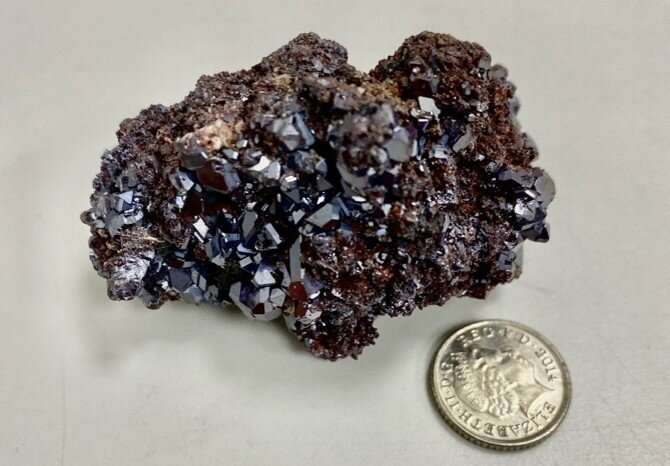Ancient Namibian stone could hold key to future quantum computers

(Phys.org) According to research led by the University of St. Andrews, a special form of light made using an ancient Namibian gemstone could be the key to new light-based quantum computers. IQT-News summarizes the research announcement below:
The research, conducted in collaboration with scientists at Harvard University in the US, Macquarie University in Australia and Aarhus University in Denmark and published in Nature Materials, used a naturally mined cuprous oxide (Cu2O) gemstone from Namibia to produce Rydberg polaritons, the largest hybrid particles of light and matter ever created. Rydberg polaritons switch continually from light to matter and back again.
This interaction is crucial because this is what allows the creation of quantum simulators, a special type of quantum computer, where information is stored in quantum bits. These quantum bits, unlike the binary bits in classical computers that can only be 0 or 1, can take any value between 0 and 1. They can therefore store much more information and perform several processes simultaneously.
This capability could allow quantum simulators to solve important mysteries of physics, chemistry and biology.
Project lead Dr. Hamid Ohadi, of the School of Physics and Astronomy at the University of St Andrews, says that “making a quantum simulator with light is the holy grail of science. We have taken a huge leap towards this by creating Rydberg polaritons, the key ingredient of it.”
One of the leading authors Dr. Sai Kiran Rajendran, of the School of Physics and Astronomy at the University of St Andrews, says that “purchasing the stone on eBay was easy. The challenge was to make Rydberg polaritons that exist in an extremely narrow color range.”
The team is currently further refining these methods in order to explore the possibility of making quantum circuits, which are the next ingredient for quantum simulators.
Sandra K. Helsel, Ph.D. has been researching and reporting on frontier technologies since 1990. She has her Ph.D. from the University of Arizona.



















